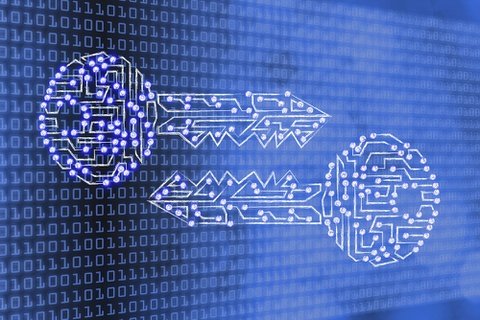Cryptography is the art of creating hidden messages and methods to hide information. For millennia people have been thinking up new and creative ways to share information with each other without also sharing it with eavesdroppers or interceptors. The Spartan military used scytales, Julius Caesar used his namesake Caesar cipher, and even the famous Enigma Machine are examples of cryptography used throughout history.
Nowadays however, cryptography seems to be left in the hands of the government or computer programmers. And any attempts to learn cryptography are buried under dozens of jargon-packed articles that bring one pressing thought to the forefront of everyone’s mind: “I cannot do this.” Well this guide exists to prove the contrary.
How to get started
As complicated as it may seem cryptography is an incredibly broad field and starting is as easy as following these three basic steps:
- Procure a sheet of paper and a pen or whatever you are comfortable using.
- Write down the alphabet in whatever pattern you desire. Line, circle, grid, anything works
- From here you have some options A. rearrange the letters within an identical pattern, B. create entirely new characters and arrange them in an identical pattern, or C. any other idea you might come up with.
Congratulations! With that you have done cryptography! This may just be a starting point but the point is that you have started which is a big step when most alternative guides require getting a doctorate in computer science to understand. From here you can make encryptions as simple or complex as you might want.
This is Where Things get Complicated
Complexity is not at all necessary, especially when it comes to doing cryptography as a hobby, but sometimes you want to challenge yourself which is where this section comes in. Also math. A lot of math. These are some fun options for complicating your encryptions.
- Use mathematical formulas to change the pattern for each letter you write.
- Come up with alternate number systems, i.e. base 7 instead of our usual base 10 numeral system.
- Deconstruct the language itself and come up with a new one based on it.
- Integrate the rules and conventions of other languages into your encryptions.
- Create personalized mathematical operations similar to addition, division, exponents, etc.
- Have extra characters that represent the same letter or make one character represent several other letters.
Boons of Cryptography
- Share your encryptions with those you trust and communicate them through secret messages.
- Acclimate yourself to the grammar and syntax of other languages by implementing those rules into your encryptions.
- Encrypted messages can also add a layer of mystery to art pieces and can even be art in and of itself.
Tips for Successful Encryptions
- Formality is the enemy of Obfuscation! Using standardized formats in messages such as greetings and closings is basically like giving eavesdroppers a massive clue to solve your encryption.
- Do not limit yourself to ideas that make sense. If it seems silly it will probably be much harder to crack.
- Let your curiosity guide you. Sometimes when making an encryption you might come across a concept that you want to research so go ahead and do it. Inspiration can come from anywhere.
I hope this guide helps you to break into the thought-provoking world of cryptography.

